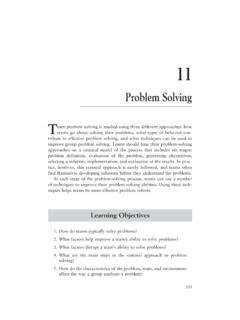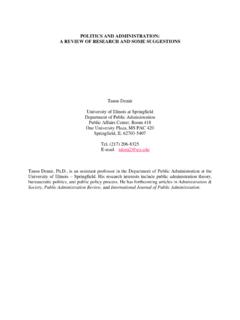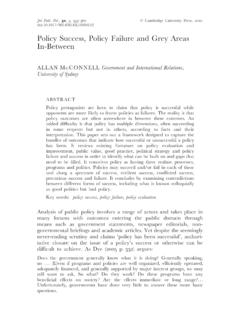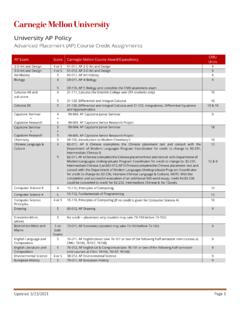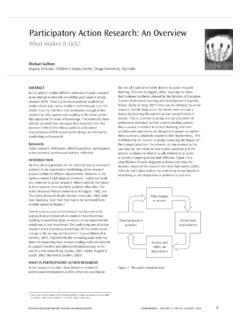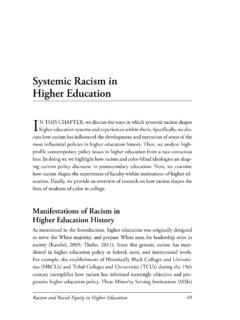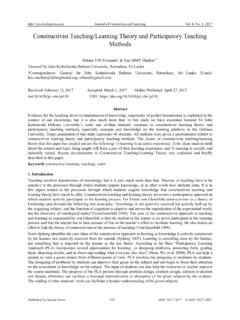Transcription of ROLE OF MONITORING AND EVALUATION ON …
1 12 ROLE OF MONITORING AND EVALUATION ON PERFORMANCE OF PUBLIC ORGANIZATION PROJECTS IN KENYA: A CASE OF KENYA MEAT COMMISSION Violet Mutinda MBIT1I&Dr. Esther KIRUJA2 Scholar in Project Management, Jomo Kenyatta University of Agriculture and Technology, Kenya 2 Senior Lecturer, Jomo Kenyatta University of Agriculture and Technology, Kenya ABSTRACT The introduction of MONITORING and EVALUATION (M&E) systems and structures is often linked to public service reform initiatives in budgeting and accountability. The aim of this study was to establish the role of MONITORING and EVALUATION on performance of public organization projects in study adopted a descriptive survey and targeted 427 employees at Kenya Meat Commission Head Office. A sample of 81 respondents of the target population was considered by use of stratified sampling method. The primary data was collected through the use of questionnaires and secondary data was obtained from published documents to supplement the primary data.
2 The variables namely human resource,implementation strategy,training and planning were regressed and study findings showed that all independent variables significantly and positively influenced perfomance of Kenya Meat commission study also recommends that human resource aspects such as staff entrusted with MONITORING and EVALUATION should have technical skills, be dedicated to the function, roles and responsibilities of MONITORING and EVALUATION personnel need to be specified at the start of is need to use participatory approaches during MONITORING and EVALUATION of organization needs to have a computerized database for storage and analysis of soft ware s and data collection tools; have progress and results review platforms and reporting , planning on MONITORING and EVALUATION of Kenya Meat Commision should be enhanced. The managers should be involved in the design, implementation and reporting on MONITORING and EVALUATION and also when clarifying scope, purpose, intended use, audience and budget for EVALUATION .
3 Keywords: MONITORING and EVALUATION , public organization, planning, training INTRODUCTION MONITORING can be defined as the ongoing process by which stakeholders obtain regular feedback on the progress being made towards achieving their goals and objectives while evaluationis a rigorous and independent assessment of either completed or ongoing activities to determine the extent to which they are achieving stated objectives and contributing to decision making (UNDP, 2009). MONITORING and EVALUATION is conducted for several purposes namely to learn what works and does not; to make informed decisions regarding programme operations and service delivery based on objective data; to ensure effective and efficient use of resources; to track progress of programmes; to assess extent the programme is having its desired impact; to create transparency and foster public trust; to understand support and meet donor needs; and to create institutional memory.
4 According to UNDP (2009), MONITORING focuses on the implementation process and asks the key question how well is the program being implemented while EVALUATION analyses the implementation process. EVALUATION measures how well program activities have met objectives, examines extent to which outcomes can be attributed to project objectives and describes quality and effectiveness of program by documenting impact on participants and community. MONITORING generates periodic reports throughout the program cycle, focuses on project outputs for MONITORING progress and making appropriate International Journal of Innovative Development & Policy Studies 3(3):12-27, July-Sept. 2015 SEAHI PUBLICATIONS, 2015 ISSN: 2467-8465 13 corrections, highlights areas for improvement for staff and tracks financial costs against budget (UNDP, 2009).
5 According to Kamunga (2000), State Corporations (SCs) have not been able to achieve their objectives due to mismanagement, bureaucracy, wastage, pilferage, incompetence and irresponsibility by directors and employees. Despite the government intervening to save the SCs by re-examining their objectives and targets, trainingemployees, increasing their salary and benefits, the state corporations still did not improve on their performance (Kamunga, 2000). Wholey (2010) states that EVALUATION is used in government to increase transparency, strengthen accountability, and improve performance, whereas performance management systems establish outcome-oriented goals and performance targets, monitor progress, stimulate performance improvements, and communicate results to higher policy levels and the public (Wholey, Hatry, & Newcomer, 2010). The MONITORING and EVALUATION (M&E) function particularly the role it plays on performance of Public Organization Projects in Kenya is the focus of this research.
6 The Kenya Meat Commission was established in 1950 by an Act of Parliament, Cap 363 of the Laws of Kenya, to purchase cattle and small stock, acquire, establish and operate abbatoirs, meat works, cold storage concerns and refrigerating Commission was mandated to slaughter cattle and small stock, process by-products, prepare hides and chill, freeze, can and store beef, mutton, poultry and other meat foods for export or for consumption within Kenya. Obsolescence of the factory s machinery and equipment, mismanagement and the poor status of the buildings, made KMC to be closed down in to its contribution to the development of Livestock industry and alleviation of poverty especially in Arid and Semi-arid Areas, the government deemed it necessary to make arrangements for the reopening of KMC in 2006. Statement of the Problem According to Knight et al (2011), governments spending on public services accounts range between 15-45 % of GDP which has a high impact on the Global Consultation on Agricultural Extension observed that MONITORING and EVALUATION are important yet frequently neglected functions in most organizations (FAO, 1990).
7 Best practice requires that projects are monitored for control because stakeholders require transparency, accountability for resource use and its impact, worthy project performance and organisational learning which will assist in forthcoming June 2006, the Government of Kenya revived Kenya Meat Commission and allocated it finances so that it may be a profit generating entity and also economically sustainable but till date, it has to be allocated grants and loans annually to finance its resources have been utilised to implement Kenya Meat Commission Projects. In the financial year 2007/2008,The Ministry for Livestock stated thatKsh 595 Million was misappropriated despite the government allocating Ksh billion towards rehabilitation and operationalization of KMC. (Kenya National Assembly Official record Hansard , 2008).
8 Further statistics indicate that in the Financial Year 2014/2015 The GoK invested Ksh 700 Million towards restructuringof Kenya Meat Commission so that it may continue operating (Government of Kenya, 2014). Previous studies have identified institutional framework,training,stakeholder participation,budgetary allocation,politics,M&E tools,planning,lack of knowledge skilled staff amongst others as factors determining MONITORING and EVALUATION projects around the globe(Musomba,2013;Kimweli,2009;Ramadhan ,2014;Muzinda,2007,Ogomoditse,2012;Afsah ,2007;Richard,2009;Indrakumaran,2011;Cle ar,2009;Ogweno,2012,Fazli,2012).Mostof these studies have focused on MONITORING and EVALUATION ,the study sought to investigate the role of MONITORING and EVALUATION on performance of Kenya Meat Commission. bjectives of the Study The general objective of the study was to estalish the role of MONITORING and EVALUATION on the performance of public organisation projects in Kenya The specific objectives of the study were to: i.
9 Examine effect ofhuman resourceon MONITORING and EVALUATION on performance of Public Organization Projects in Kenya Mbiti & Int. J. Innovative Development & Policy Studies 3(3):12-27, 2015 14 ii. Determine effect of implementation strategies on MONITORING and EVALUATION on performance of Public Organization Projects in Kenya iii. Examine the effect of training on MONITORING and EVALUATION on performance of Public Organization Projects in Kenya iv. Find out effects of planning on MONITORING and EVALUATION on performance of Public Organization Projects in Kenya Research Questions The study sought to answer the following research questions: i. Doeshuman resourceon MONITORING and EVALUATION affect performance of Public Organization Projects in Kenya? ii. What is the effect of implementation strategies on MONITORING and EVALUATION on performance of Public Organization Projects in Kenya?
10 Iii. Does training affect on MONITORING and EVALUATION affect performance of Public Organization Projects in Kenya? iv. What is the effect of planning on MONITORING and EVALUATION on performance of Public Organization Projects in Kenya? Literature Review Theoretical Review This section reviews theories related to the study. These theories include resource based theory, agency theory, equity theoryand theory of change. Resource based theory Penrose is credited with establishing the foundations of resource-based view as a theory (Roos&Roos, 1997).Barney (1991) states that a firm is a collection of physical capital resources, human capital resources and organizational resources. The core premise of the resource-based view is that organizational resources and capabilities can vary significantly across firms, and that these differences can be stable (Hijzen, G rg& Hine, 2005).

